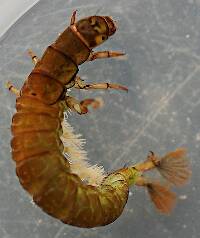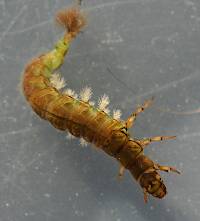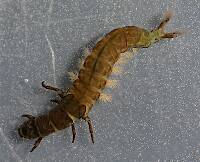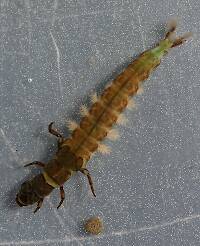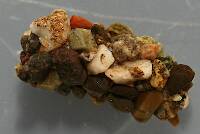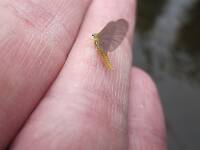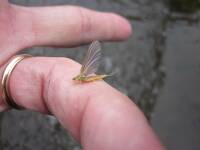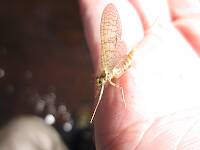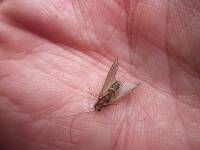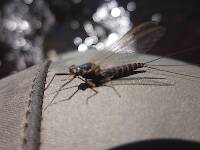
Salmonflies
Pteronarcys californica
The giant Salmonflies of the Western mountains are legendary for their proclivity to elicit consistent dry-fly action and ferocious strikes.
Featured on the forum

I was not fishing, but happened to be at an unrelated social event on a hill above this tiny creek (which I never even saw) when this stonefly flew by me. I assume it came from there. Some key characteristics are tricky to follow, but process of elimination ultimately led me to Sweltsa borealis. It is reassuringly similar to this specimen posted by Bob Newell years ago. It is also so strikingly similar to this nymph from the same river system that I'm comfortable identifying that nymph from this adult. I was especially pleased with the closeup photo of four mites parasitizing this one.

Troutnut is a project started in 2003 by salmonid ecologist Jason "Troutnut" Neuswanger to help anglers and
fly tyers unabashedly embrace the entomological side of the sport. Learn more about Troutnut or
support the project for an enhanced experience here.
Litobrancha on Sep 23, 2006September 23rd, 2006, 10:46 am EDT
looks like a hydropsyche female.
[edited by Troutnut: added title]
[edited by Troutnut: added title]
GONZO on Sep 23, 2006September 23rd, 2006, 12:39 pm EDT
Similar question on this one, Lito. I think I get the female identification here (I can see the ventral view), but what is the reason for Hydropsyche as opposed to Ceratopsyche? (Or were you simply using the older generic epithet to include both?) Thanks, again.
Quick Reply
Related Discussions
Topic
Replies
Last Reply
8
Sep 21, 2009
by GONZO
by GONZO
0
Mar 23, 2010
by Troutboomer
by Troutboomer
17
Nov 22, 2014
by Millcreek
by Millcreek
3
Dec 22, 2007
by Creno
by Creno



